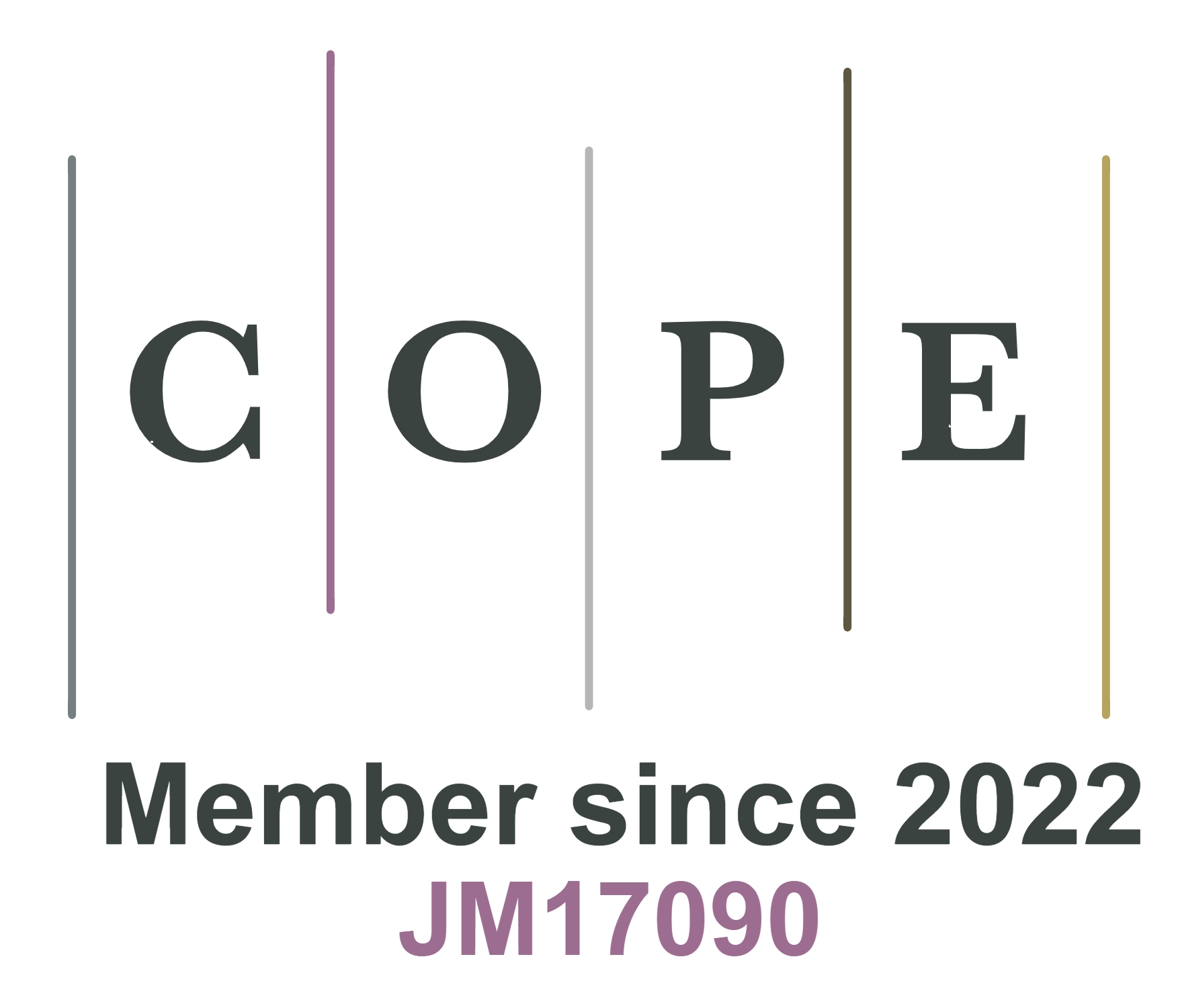REFERENCES
1. Rochman CM, Browne MA, Halpern BS, et al. Policy: classify plastic waste as hazardous. Nature 2013;494:169-71.
3. Isogai A. Development of completely dispersed cellulose nanofibers. Proc Jpn Acad Ser B Phys Biol Sci 2018;94:161-79.
4. Zhu Y, Romain C, Williams CK. Sustainable polymers from renewable resources. Nature 2016;540:354-62.
5. Kou H, Lu J, Li Y. High-strength and high-ductility nanostructured and amorphous metallic materials. Adv Mater 2014;26:5518-24.
6. Gong J, Katsuyama Y, Kurokawa T, Osada Y. Double-network hydrogels with extremely high mechanical strength. Adv Mater 2003;15:1155-8.
7. Zhang XF, Ma X, Hou T, et al. Inorganic salts induce thermally reversible and anti-freezing cellulose hydrogels. Angew Chem Int Ed Engl 2019;58:7366-70.
8. Moon RJ, Martini A, Nairn J, Simonsen J, Youngblood J. Cellulose nanomaterials review: structure, properties and nanocomposites. Chem Soc Rev 2011;40:3941-94.
9. Lee KY, Buldum G, Mantalaris A, Bismarck A. More than meets the eye in bacterial cellulose: biosynthesis, bioprocessing, and applications in advanced fiber composites. Macromol Biosci 2014;14:10-32.
10. Ross P, Mayer R, Benziman M. Cellulose biosynthesis and function in bacteria. Microbiol Rev 1991;55:35-58.
11. Hirai A, Tsuji M, Horii F. TEM study of band-like cellulose assemblies produced by acetobacter xylinum at 4 °C. Cellulose 2002;9:105-13.
12. Dahman Y. Nanostructured biomaterials and biocomposites from bacterial cellulose nanofibers. J Nanosci Nanotechnol 2009;9:5105-22.
13. Maria LCS, Santos ALC, Oliveira PC, et al. Preparation and antibacterial activity of silver nanoparticles impregnated in bacterial cellulose. Polímeros 2010;20:72-7.
14. Iguchi M, Yamanaka S, Budhiono A. Bacterial cellulose - a masterpiece of nature's arts. J Mater Sci 2000;35:261-70.
15. Bäckdahl H, Helenius G, Bodin A, et al. Mechanical properties of bacterial cellulose and interactions with smooth muscle cells. Biomaterials 2006;27:2141-9.
16. Vitta S, Thiruvengadam V. Multifunctional bacterial cellulose and nanoparticle-embedded composites. Curr Sci 2012;102:1398-405.
17. Wu ZY, Liang HW, Chen LF, Hu BC, Yu SH. Bacterial cellulose: a robust platform for design of three dimensional carbon-based functional nanomaterials. Acc Chem Res 2016;49:96-105.
18. Zhu H, Zhu S, Jia Z, et al. Anomalous scaling law of strength and toughness of cellulose nanopaper. Proc Natl Acad Sci U S A 2015;112:8971-6.
20. Evans AG. Perspective on the development of high-toughness ceramics. J Am Ceram Soc 1990;73:187-206.
21. Hofmann DC, Suh JY, Wiest A, et al. Designing metallic glass matrix composites with high toughness and tensile ductility. Nature 2008;451:1085-9.
22. Launey ME, Ritchie RO. On the fracture toughness of advanced materials. Adv Mater 2009;21:2103-10.
23. Meng Q, Li B, Li T, Feng X. Effects of nanofiber orientations on the fracture toughness of cellulose nanopaper. Eng Fract Mech 2018;194:350-61.
24. Ray U, Zhu S, Pang Z, Li T. Mechanics design in cellulose-enabled high-performance functional materials. Adv Mater 2021;33:e2002504.
25. Sinko R, Keten S. Traction-separation laws and stick-slip shear phenomenon of interfaces between cellulose nanocrystals. J Mech Phys Solids 2015;78:526-39.
26. Meng Q, Li B, Li T, Feng XQ. A multiscale crack-bridging model of cellulose nanopaper. J Mech Phys Solids 2017;103:22-39.
27. Nandgaonkar AG, Wang Q, Fu K, et al. A one-pot biosynthesis of reduced graphene oxide (RGO)/bacterial cellulose (BC) nanocomposites. Green Chem 2014;16:3195-201.
28. Wan Y, Zhang F, Li C, Xiong G, Zhu Y, Luo H. Facile and scalable production of three-dimensional spherical carbonized bacterial cellulose/graphene nanocomposites with a honeycomb-like surface pattern as potential superior absorbents. J Mater Chem A 2015;3:24389-96.
29. Luo H, Dong J, Yao F, et al. Layer-by-layer assembled bacterial cellulose/graphene oxide hydrogels with extremely enhanced mechanical properties. Nanomicro Lett 2018;10:42.
30. Luo H, Xiong P, Xie J, et al. Uniformly dispersed freestanding carbon nanofiber/graphene electrodes made by a scalable biological method for high-performance flexible supercapacitors. Adv Funct Mater 2018;28:1803075.
31. Wan Y, Yang S, Wang J, et al. Scalable synthesis of robust and stretchable composite wound dressings by dispersing silver nanowires in continuous bacterial cellulose. Composites Part B 2020;199:108259.
32. Luo H, Xie J, Xiong L, Zhu Y, Yang Z, Wan Y. Fabrication of flexible, ultra-strong, and highly conductive bacterial cellulose-based paper by engineering dispersion of graphene nanosheets. Composites Part B 2019;162:484-90.
33. Luo H, Dong J, Xu X, Wang J, Yang Z, Wan Y. Exploring excellent dispersion of graphene nanosheets in three-dimensional bacterial cellulose for ultra-strong nanocomposite hydrogels. Composites Part A 2018;109:290-7.
34. Kim D, Park S, Jo I, et al. Multiscale modulation of nanocrystalline cellulose hydrogel via nanocarbon hybridization for 3D neuronal bilayer formation. Small 2017;13:1700331.
35. Luo H, Xiong G, Yang Z, Raman SR, Si H, Wan Y. A novel three-dimensional graphene/bacterial cellulose nanocomposite prepared by in situ biosynthesis. RSC Adv 2014;4:14369-72.
36. Jin L, Zeng Z, Kuddannaya S, Wu D, Zhang Y, Wang Z. Biocompatible, free-standing film composed of bacterial cellulose nanofibers-graphene composite. ACS Appl Mater Interfaces 2016;8:1011-8.
37. Liu K, Jiang Q, Kacica C, Derami HG, Biswas P, Singamaneni S. Flexible solid-state supercapacitor based on tin oxide/reduced graphene oxide/bacterial nanocellulose. RSC Adv 2018;8:31296-302.
38. Guan F, Chen S, Sheng N, et al. Mechanically robust reduced graphene oxide/bacterial cellulose film obtained via biosynthesis for flexible supercapacitor. Chem Eng J 2019;360:829-37.
39. Guan F, Han Z, Jin M, et al. Durable and flexible bio-assembled RGO-BC/BC bilayer electrodes for pressure sensing. Adv Fiber Mater 2021;3:128-37.
40. Jiang Q, Ghim D, Cao S, et al. Photothermally active reduced graphene oxide/bacterial nanocellulose composites as biofouling-resistant ultrafiltration membranes. Environ Sci Technol 2019;53:412-21.
41. Luo H, Ao H, Li G, et al. Bacterial cellulose/graphene oxide nanocomposite as a novel drug delivery system. Curr Appl Phys 2017;17:249-54.
42. Ye J, Guo L, Feng Y, et al. Fabrication of bacterial cellulose-based ATO-PPy nanocomposites as flexible conductive materials. J Electron Mater 2020;49:6686-94.
43. Shah N, Ul-Islam M, Khattak WA, Park JK. Overview of bacterial cellulose composites: a multipurpose advanced material. Carbohydr Polym 2013;98:1585-98.
44. Li Q, Gao R, Wang L, et al. Nanocomposites of bacterial cellulose nanofibrils and zein nanoparticles for food packaging. ACS Appl Nano Mater 2020;3:2899-910.
45. Yang Y, Huang C, Gao G, Hu C, Luo L, Xu J. Aramid nanofiber/bacterial cellulose composite separators for lithium-ion batteries. Carbohydr Polym 2020;247:116702.
46. Fang D, Zhou J, Sheng L, Tang W, Tang J. Juglone bonded carbon nanotubes interweaving cellulose nanofibers as self-standing membrane electrodes for flexible high energy supercapacitors. Chem Eng J 2020;396:125325.
47. Nie X, Lv P, Stanley SL, Wang D, Wu S, Wei Q. Ultralight nanocomposite aerogels with interpenetrating network structure of bacterial cellulose for oil absorption. J Appl Polym Sci 2019;136:48000.
48. Ma L, Bi Z, Zhang W, et al. Synthesis of a three-dimensional interconnected oxygen-, boron-, nitrogen-, and phosphorus tetratomic-doped porous carbon network as electrode material for the construction of a superior flexible supercapacitor. ACS Appl Mater Interfaces 2020;12:46170-80.
49. Liu Y, Zhou J, Zhu E, Tang J, Liu X, Tang W. Facile synthesis of bacterial cellulose fibres covalently intercalated with graphene oxide by one-step cross-linking for robust supercapacitors. J Mater Chem C 2015;3:1011-7.
50. Zhu J, Shi R, Liu Y, et al. 3D interwoven MXene networks fabricated by the assistance of bacterial celluloses as high-performance cathode material for rechargeable magnesium battery. Appl Surf Sci 2020;528:146985.
51. Wang Y, Wang X, Li X, et al. Engineering 3D ion transport channels for flexible MXene films with superior capacitive performance. Adv Funct Mater 2019;29:1900326.
52. Li C, Wu ZY, Liang HW, Chen JF, Yu SH. Ultralight multifunctional carbon-based aerogels by combining graphene oxide and bacterial cellulose. Small 2017;13:1700453.
54. Isogai A. Wood nanocelluloses: fundamentals and applications as new bio-based nanomaterials. J Wood Sci 2013;59:449-59.
55. Isogai A, Hänninen T, Fujisawa S, Saito T. Review: catalytic oxidation of cellulose with nitroxyl radicals under aqueous conditions. Prog Polym Sci 2018;86:122-48.
56. Kim S, Jeon J, Kim H, Kee CD, Oh I. High-fidelity bioelectronic muscular actuator based on graphene-mediated and TEMPO-oxidized bacterial cellulose. Adv Funct Mater 2015;25:3560-70.
57. Yao J, Ji P, Sheng N, et al. Hierarchical core-sheath polypyrrole@carbon nanotube/bacterial cellulose macrofibers with high electrochemical performance for all-solid-state supercapacitors. Electrochim Acta 2018;283:1578-88.
58. Sheng N, Chen S, Yao J, et al. Polypyrrole@TEMPO-oxidized bacterial cellulose/reduced graphene oxide macrofibers for flexible all-solid-state supercapacitors. Chem Eng J 2019;368:1022-32.
59. Guan F, Xie Y, Wu H, et al. Silver nanowire-bacterial cellulose composite fiber-based sensor for highly sensitive detection of pressure and proximity. ACS Nano 2020;14:15428-39.
60. Zhou X, Liu Y, Du C, et al. Layer-by-layer engineered silicon-based sandwich nanomat as flexible anode for lithium-ion batteries. ACS Appl Mater Interfaces 2019;11:39970-8.
61. Wu Y, Hu H, Yuan C, Song J, Wu M. Electrons/ions dual transport channels design: Concurrently tuning interlayer conductivity and space within re-stacked few-layered MXenes film electrodes for high-areal-capacitance stretchable micro-supercapacitor-arrays. Nano Energy 2020;74:104812.
62. Hiraoki R, Ono Y, Saito T, Isogai A. Molecular mass and molecular-mass distribution of TEMPO-oxidized celluloses and TEMPO-oxidized cellulose nanofibrils. Biomacromolecules 2015;16:675-81.
63. Zhou Y, Saito T, Bergström L, Isogai A. Acid-Free preparation of cellulose nanocrystals by TEMPO oxidation and subsequent cavitation. Biomacromolecules 2018;19:633-9.
64. Iwamoto S, Kai W, Isogai A, Iwata T. Elastic modulus of single cellulose microfibrils from tunicate measured by atomic force microscopy. Biomacromolecules 2009;10:2571-6.
65. Saito T, Kuramae R, Wohlert J, Berglund LA, Isogai A. An ultrastrong nanofibrillar biomaterial: the strength of single cellulose nanofibrils revealed via sonication-induced fragmentation. Biomacromolecules 2013;14:248-53.
66. Wegst UG, Bai H, Saiz E, Tomsia AP, Ritchie RO. Bioinspired structural materials. Nat Mater 2015;14:23-36.
67. Bush S, Torres F, Methven J. Rheological characterisation of discrete long glass fibre (LGF) reinforced thermoplastics. Composites Part A 2000;31:1421-31.
68. Torres F, Bush S. Sheet extrusion and thermoforming of discrete long glass fibre reinforced polypropylene. Composites Part A 2000;31:1289-94.
69. Ma C, Cao W, Zhang W, et al. Wearable, ultrathin and transparent bacterial celluloses/MXene film with Janus structure and excellent mechanical property for electromagnetic interference shielding. Chem Eng J 2021;403:126438.
70. Shahzad F, Alhabeb M, Hatter CB, et al. Electromagnetic interference shielding with 2D transition metal carbides (MXenes). Science 2016;353:1137-40.
71. Olsson RT, Azizi Samir MA, Salazar-Alvarez G, et al. Making flexible magnetic aerogels and stiff magnetic nanopaper using cellulose nanofibrils as templates. Nat Nanotechnol 2010;5:584-8.
72. Sun Y, Quan Q, Meng H, et al. Enhanced neurite outgrowth on a multiblock conductive nerve scaffold with self-powered electrical stimulation. Adv Healthc Mater 2019;8:e1900127.
73. Eskilson O, Lindström SB, Sepulveda B, et al. Self-assembly of mechanoplasmonic bacterial cellulose-metal nanoparticle composites. Adv Funct Mater 2020;30:2004766.
74. Morales-Narváez E, Golmohammadi H, Naghdi T, et al. Nanopaper as an optical sensing platform. ACS Nano 2015;9:7296-305.
75. Liu Y, Wang S, Wang Z, et al. The in situ synthesis of silver nanoclusters inside a bacterial cellulose hydrogel for antibacterial applications. J Mater Chem B 2020;8:4846-50.
76. Wasim M, Mushtaq M, Khan SU, et al. Development of bacterial cellulose nanocomposites: an overview of the synthesis of bacterial cellulose nanocomposites with metallic and metallic-oxide nanoparticles by different methods and techniques for biomedical applications. J Ind Text 2020; doi: 10.1177/1528083720977201.
77. Liu Y, Zhang Y, Zhang Y, et al. MoC nanoparticle-embedded carbon nanofiber aerogels as flow-through electrodes for highly efficient pseudocapacitive deionization. J Mater Chem A 2020;8:1443-50.
78. Anton-Sales I, Roig-Sanchez S, Sánchez-Guisado MJ, Laromaine A, Roig A. Bacterial nanocellulose and titania hybrids: cytocompatible and cryopreservable cell carriers. ACS Biomater Sci Eng 2020;6:4893-902.
79. Liu R, Ma L, Niu G, et al. Oxygen-deficient bismuth oxide/graphene of ultrahigh capacitance as advanced flexible anode for asymmetric supercapacitors. Adv Funct Mater 2017;27:1701635.
80. Roig-sanchez S, Jungstedt E, Anton-sales I, et al. Nanocellulose films with multiple functional nanoparticles in confined spatial distribution. Nanoscale Horiz 2019;4:634-41.
81. Jiang S, Hu Q, Xu M, et al. Crystalline CdS/MoS2 shape-controlled by a bacterial cellulose scaffold for enhanced photocatalytic hydrogen evolution. Carbohydr Polym 2020;250:116909.
82. Ferreira-Neto EP, Ullah S, da Silva TCA, et al. Bacterial nanocellulose/MoS2 hybrid aerogels as bifunctional adsorbent/photocatalyst membranes for in-flow water decontamination. ACS Appl Mater Interfaces 2020;12:41627-43.
83. Lai F, Miao YE, Huang Y, Zhang Y, Liu T. Nitrogen-doped carbon nanofiber/molybdenum disulfide nanocomposites derived from bacterial cellulose for high-efficiency electrocatalytic hydrogen evolution reaction. ACS Appl Mater Interfaces 2016;8:3558-66.
84. Wang P, Geng Z, Gao J, et al. ZnxCd1-xS/bacterial cellulose bionanocomposite foams with hierarchical architecture and enhanced visible-light photocatalytic hydrogen production activity. J Mater Chem A 2015;3:1709-16.
85. Fei Y, Liang M, Zhou T, Chen Y, Zou H. Unique carbon nanofiber@Co/C aerogel derived bacterial cellulose embedded zeolitic imidazolate frameworks for high-performance electromagnetic interference shielding. Carbon 2020;167:575-84.
86. Cui J, Xu X, Yang L, et al. Soft foam-like UiO-66/polydopamine/bacterial cellulose composite for the removal of aspirin and tetracycline hydrochloride. Chem Eng J 2020;395:125174.
87. Ma X, Lou Y, Chen X, Shi Z, Xu Y. Multifunctional flexible composite aerogels constructed through in-situ growth of metal-organic framework nanoparticles on bacterial cellulose. Chem Eng J 2019;356:227-35.
88. Chen LF, Huang ZH, Liang HW, Guan QF, Yu SH. Bacterial-cellulose-derived carbon nanofiber@MnO2 and nitrogen-doped carbon nanofiber electrode materials: an asymmetric supercapacitor with high energy and power density. Adv Mater 2013;25:4746-52.
89. Gupta A, Briffa SM, Swingler S, et al. Synthesis of silver nanoparticles using curcumin-cyclodextrins loaded into bacterial cellulose-based hydrogels for wound dressing applications. Biomacromolecules 2020;21:1802-11.
90. Zrínyi M, Barsi L, Büki A. Ferrogel: a new magneto-controlled elastic medium. Polym Gels and Netw 1997;5:415-27.
91. Bonini M, Lenz S, Giorgi R, Baglioni P. Nanomagnetic sponges for the cleaning of works of art. Langmuir 2007;23:8681-5.
92. Liang H, Guan Q, Zhu Z, et al. Highly conductive and stretchable conductors fabricated from bacterial cellulose. NPG Asia Mater 2012;4:e19.
93. Wu ZY, Li C, Liang HW, Chen JF, Yu SH. Ultralight, flexible, and fire-resistant carbon nanofiber aerogels from bacterial cellulose. Angew Chem Int Ed Engl 2013;52:2925-9.
94. Elkhatat AM, Al-Muhtaseb SA. Advances in tailoring resorcinol-formaldehyde organic and carbon gels. Adv Mater 2011;23:2887-903.
95. Yu W, Lin W, Shao X, Hu Z, Li R, Yuan D. High performance supercapacitor based on Ni3S2/carbon nanofibers and carbon nanofibers electrodes derived from bacterial cellulose. J Power Sources 2014;272:137-43.
96. Xu Z, He M, Zhou Y, et al. Spider web-like carbonized bacterial cellulose/MoSe2 nanocomposite with enhanced microwave attenuation performance and tunable absorption bands. Nano Res 2021;14:738-46.
97. Zhou S, Qi H. A sustainable natural nanofibrous confinement strategy to obtain ultrafine Co3O4 nanocatalysts embedded in N-enriched carbon fibers for efficient biomass-derivative in situ hydrogenation. Nanoscale 2020;12:17373-84.
98. Lai F, Yong D, Ning X, Pan B, Miao YE, Liu T. Bionanofiber assisted decoration of few-layered MoSe2 nanosheets on 3D conductive networks for efficient hydrogen evolution. Small 2017;13:1602866.
99. Lai F, Miao YE, Zuo L, Lu H, Huang Y, Liu T. Biomass-derived nitrogen-doped carbon nanofiber network: a facile template for decoration of ultrathin nickel-cobalt layered double hydroxide nanosheets as high-performance asymmetric supercapacitor electrode. Small 2016;12:3235-44.
100. Huang Y, Lin Z, Zheng M, et al. Amorphous Fe2O3 nanoshells coated on carbonized bacterial cellulose nanofibers as a flexible anode for high-performance lithium ion batteries. J Power Sources 2016;307:649-56.
101. Wang W, Sun Y, Liu B, Wang S, Cao M. Porous carbon nanofiber webs derived from bacterial cellulose as an anode for high performance lithium ion batteries. Carbon 2015;91:56-65.









